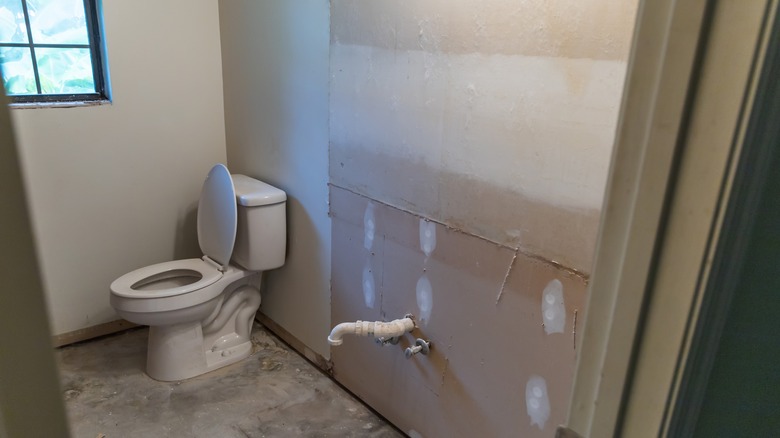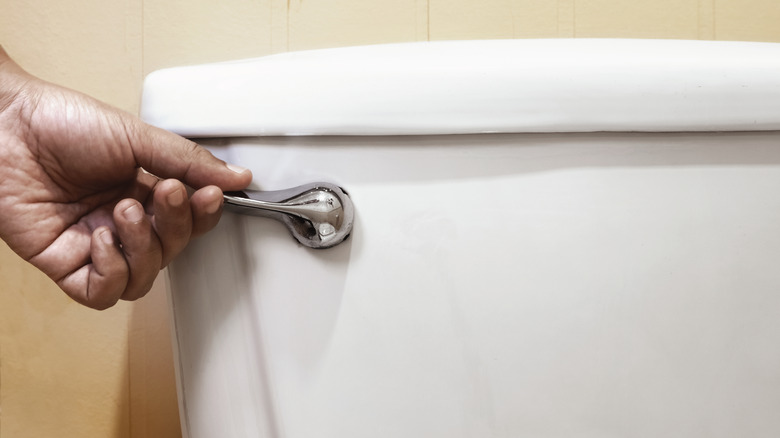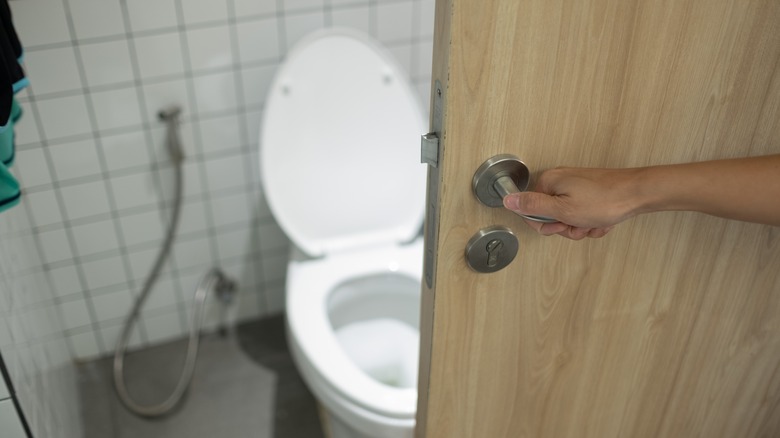If Your Old Home Has A Stand-Alone Toilet In The Basement, This Is What It Means
If you live in a home built between 1880 and 1910, you might have a lone toilet in the basement — especially if your house is located in the Northern New Jersey, Pennsylvania, or New York area. The strange thing about these toilets found in the basements of older homes is that they are typically sitting in the open with no shower or sink to accompany them. Moreover, these toilets are often placed in odd spots, like right under a window or in a corner, and may even appear in unfinished basements. So, what is the story behind these mysterious toilets?
Even though they look odd sitting alone in the basement, these toilets once served an important purpose. Many locals believed these toilets were for steel workers to use after coming home from their dirty factory jobs before they headed upstairs to a clean home, earning the toilets the nickname "Pittsburg potty." But this actually isn't true. The toilets weren't meant to be used at all. Instead, they were installed in basementsto prevent sewage backup.
Why your home has a lone toilet in the basement
These toilets can be found in homes built between the late 1800s and up until the end of World War II when plumbing improved. Despite the place-based moniker, Pittsburg potties can also be found in other parts of the country, including states like Oklahoma, New York, and New Jersey.
When cities first started installing underground sewer systems, they were pretty rudimentary. Cities didn't have the long-lasting sewer pipes that we have today. Instead, the systems would become clogged and back up into homes. As a result, the sewage and wastewater would come up through showers, sinks, and toilets and flood homeowners' nice bathroom floors.
When a sewer system is clogged, the waste will back up into the lowest plumbing fixture located in the house. So, the idea was to put a toilet there to overt a catastrophe — with the most logical placement being in the basement. So, when there is a backup, sewer waste will flow into the toilet rather than into other fixtures. Plus, most basements were unfinished at the time, which made it easy to clean if there was a sewer overflow.
What can you do with a Pittsburg toilet?
Do you have an awkwardly-placed basement toilet that isn't used? You might feel uncomfortable using a lone badly stained toilet sitting in the corner of your basement. But these pieces of history have a lot of potential. Having an extra toilet is very convenient. With a bit of work, your toilet can be a very useful feature in your home. And if you already have one that works, you can easily create a half bathroom.
All you would need to do is install walls, a door, fixtures, and a sink. Consider adding nice flooring, outfitting the walls with shiplap paneling, and adding gorgeous light fixtures to create a homey feeling in the space. You can do some of this half-bath work yourself, but you may need to hire a professional for certain tasks, such as plumbing the sink. It might take a bit of work and extra cash, but adding a half bathroom will add convenience and increase the value of your home.


